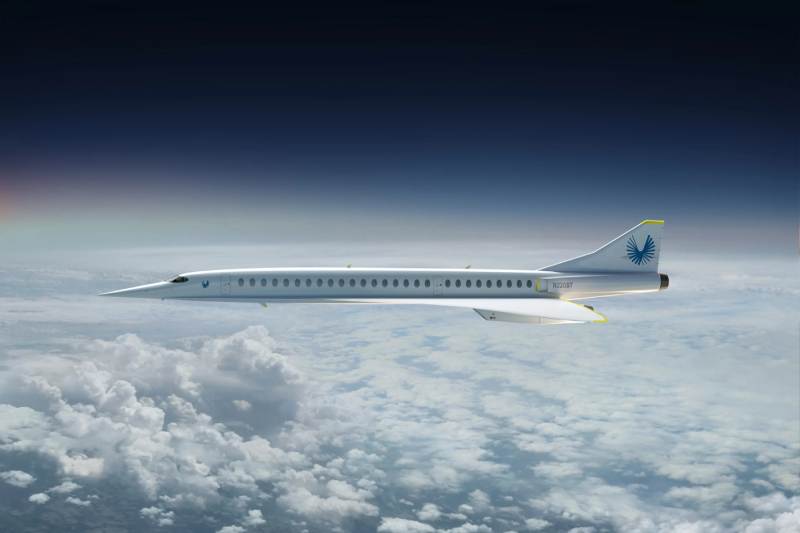Travel
Six Innovative New Aircraft That Will Soon Take to the Skies

A wave of next-generation aircraft is making their way onto the market in response to the pandemic-driven demand for private aviation, much like a baby boom after a blizzard. Interest was greatly accelerated by Covid, according to industry analyst Rolland Vincent. “It attracted individuals who could afford entry into the area but couldn’t justify it.” Furthermore, the aerospace conglomerate Honeywell predicts that business jet deliveries in 2024 will increase by 10% from the previous year.
The battery-powered eVTOL market, which is currently teeming with start-ups hoping to democratize aviation over the next 24 months, stands to gain additional from the trend. Here are six aircraft that are on radar, ranging from traditional to futuristic.
Volocity of Volocopters
Although flying cars have always been talked about, Volocopter’s Volocity project has a strict deadline: its battery-operated vehicle is meant to fly over Paris during the Olympics the following summer. The autonomous aircraft, which is built in Germany, can travel up to 68 mph at its maximum speed and 56 mph at cruise using its 18 rotors for vertical takeoff and landing. Although transporting large crowds of people around the City of Light may take some time with the two-passenger configuration, the Summer Games’ global visibility could significantly advance the new air-mobility movement.
The Dassault Falcon 6X
With engine problems forcing the French company to shelve its Falcon 5X project, Dassault turned its attention to passenger comfort for its ultra-wide-body Falcon 6X, which will begin deliveries this year. Vincent points out, “They really started with the cabin and worked from there—it’s the first time Dassault has designed from the inside out.” Its 5,500 nautical mile range, maximum cruising speed of Mach 0.90, extra large windows, generous proportions, and elegant details like a skylight are important design differentiators.
Gulfstream G700
In business aviation, the ultra-long-range Gulfstream G700 is expected to lead its class. With a maximum speed of Mach 0.935, its recently certified Rolls-Royce Pearl 700 engines provide a 7,555 nautical mile range at Mach 0.85. Test models of the G700 equipped with this technology have traveled to 25 countries and set 44 world speed records. In addition, the model boasts the longest cabin of any rival, with up to four zones that can accommodate up to 13 passengers and 8 beds. The lowest cabin altitude in the industry and special lighting to reduce jet lag also contribute to setting a new benchmark. By mid-2024, nineteen examples have already been constructed and are awaiting FAA certification.
Midnight Archer
With a recent $142 million deal with the U.S. Air Force and a $1 billion agreement with United Airlines, California-based Archer Aviation is in it for the long haul if purchase contracts are any indication of the long-term viability of eVTOL start-ups. The Midnight is a great choice for trips from major metro airports to locations within 50 miles because of its configuration for one pilot and four passengers, which is powered by six battery packs that drive 12 rotors. By the end of 2024, FAA certification is anticipated.
Denali Beechcraft
The Beechcraft Denali is a single-engine turboprop aircraft with a cutting-edge General Electric Catalyst engine, the first clean-sheet turboprop engine design in fifty years. This engine will reduce fuel consumption by twenty percent while providing ten percent more cruise power than competitors. Designers at Beechcraft concentrated on creating an executive version’s cabin that looked like a jet. It has six seats in addition to a refreshment center. The Denali is a cost-effective substitute for midsize private jets that is expected to revolutionize the turboprop market when it goes into service in 2025. Test flights are currently underway.
Ascending Cessna Citation
The Citation Ascend, the newest model in Cessna’s wildly popular 560XL series, is presently undergoing testing; FAA certification is anticipated in early 2025. The business jet has a capacity of 12 passengers and features a flat floor for more ergonomic seating, Garmin G5000 avionics, and cabin windows that are 15% larger than those of the previous generation 560XL. With a cruising speed of 441 knots and a maximum range of 2,100 nautical miles, the new Pratt & Whitney Canada PW545D engines are highly efficient. As part of a 1,500 aircraft options order from NetJets, the Ascend’s commercial success has been virtually guaranteed.
-
Health4 weeks ago
Back to Roots: Ayurveda Offers Natural Cure for Common Hair Woes
-

 Tech4 weeks ago
Tech4 weeks agoFrom Soil to Silicon: The Rise of Agriculture AI and Drone Innovations in 2025
-

 Science2 weeks ago
Science2 weeks agoJuly Full Moon 2025: Everything You Should Need to Know, When and Where to See Buck Moon
-

 Tech4 weeks ago
Tech4 weeks agoAdobe Firefly App Now Available on iOS and Android Phones to Create AI Images and Videos Anywhere
-

 Sports4 weeks ago
Sports4 weeks agoFIBA 3×3 World Cup 2025: Full Schedule, Preview, and How to Watch
-

 Gadget4 weeks ago
Gadget4 weeks agoThings to Know about Samsung Galaxy S26: What’s New and What’s Next
-

 Apps3 weeks ago
Apps3 weeks agoWhat’s New Features Coming to Apple Music App in iOS 26
-

 Sports2 weeks ago
Sports2 weeks agoPrefontaine Classic 2025: Full Schedule, Preview, Field, Events and How to Watch Diamond League Eugene Live











